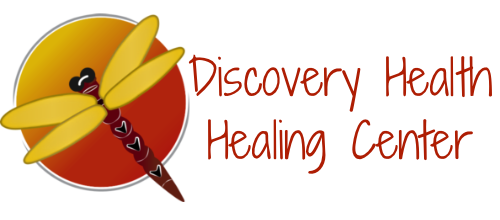Sports Injuries and Healing with Photobiomodulation
Welcome to the Future of Medicine with Discovery Health Healing Center (DHHC) and THOR Laser Therapy! DHHC specializes in Restorative Medicine with the utilization of PhotoBioModulation. Medical grade (not cosmetic) THOR Laser, the newest laser technology that is proven to significantly increase athletic performance and endurance, relieve pain, resolve inflammation, and promote faster healing of an injury.
How Photobiomodulation Can Help Heal Sports Injuries
Photobiomodulation (PBM), also known as low-level laser therapy (LLLT) or red light therapy, uses specific wavelengths of light to penetrate tissues and promote healing, reduce inflammation, and alleviate pain. PBM has gained attention for its potential benefits in treating sports injuries due to its non-invasive nature and ability to stimulate cellular processes.
Mechanisms of Photobiomodulation
Enhanced Cellular Energy Production:
- Mitochondrial Activation: PBM increases the activity of mitochondria, the powerhouses of cells, leading to an upsurge in the production of adenosine triphosphate (ATP), which is essential for cellular repair and regeneration.
Reduced Inflammation:
- Modulation of Inflammatory Pathways: PBM can reduce the production of pro-inflammatory cytokines and enhance anti-inflammatory cytokines, helping to decrease inflammation and swelling in injured tissues.
Pain Relief:
- Endorphin Release: The therapy can stimulate the release of endorphins, which are natural pain-relieving compounds.
- Nerve Conduction: PBM can influence nerve conduction rates, providing pain relief by modulating pain signals.
Improved Blood Flow and Angiogenesis:
- Increased Circulation: PBM enhances blood flow to the injured area, supplying more oxygen and nutrients essential for healing.
- Angiogenesis: It promotes the formation of new blood vessels, which helps in the repair of damaged tissues.
Collagen Production:
- Tissue Repair: PBM stimulates fibroblast activity, which is crucial for the production of collagen, a protein that is vital for the repair and strength of connective tissues.
Benefits for Specific Sports Injuries
Muscle Strains and Tears:
- Faster Recovery: By enhancing cellular repair processes and reducing inflammation, PBM can expedite the recovery of muscle injuries.
- Reduced Pain and Swelling: Athletes may experience less pain and quicker reduction in swelling.
Ligament and Tendon Injuries:
- Healing of Tendinitis and Sprains: PBM can help heal tendinitis and sprains by promoting collagen synthesis and reducing inflammation.
- Improved Functionality: Ligaments and tendons recover more quickly, leading to restored functionality and strength.
Joint Injuries:
- Arthritis and Bursitis: PBM can alleviate pain and improve mobility in joint-related injuries and conditions like arthritis and bursitis.
- Enhanced Joint Health: Regular PBM treatments can support overall joint health and prevent further injury.
Bone Fractures:
- Accelerated Bone Repair: PBM can stimulate osteoblasts, the cells responsible for bone formation, thereby speeding up the healing of fractures.
Soft Tissue Injuries:
- Wound Healing: For cuts, abrasions, and other soft tissue injuries, PBM can enhance the healing process by improving cellular repair and reducing infection risks.
Implementation in Sports Medicine
Treatment Protocols:
- Session Duration and Frequency: Treatment protocols typically involve multiple sessions per week, with each session lasting between 10 to 30 minutes, depending on the severity of the injury.
- Dosage and Wavelength: The effectiveness of PBM depends on the appropriate dosage and wavelength, which is usually determined by a healthcare professional.
Combination with Other Therapies:
- Complementary Treatments: PBM is often used alongside other treatments such as physical therapy, massage, and cryotherapy to enhance overall recovery and effectiveness.
Accessibility:
- In-Clinic and At-Home Devices: PBM devices are available for use in clinics under professional supervision, and there are also portable devices for at-home use, providing flexibility for athletes.
Safety and Considerations
- Minimal Side Effects: PBM is generally safe with few reported side effects, such as temporary redness or discomfort at the treatment site.
- Professional Guidance: It's essential to use PBM under the guidance of a trained healthcare professional to ensure proper application and avoid any potential risks.
- Not a Substitute for Conventional Treatments: While PBM can significantly aid recovery, it should not replace conventional medical treatments but rather complement them.
Conclusion
Photobiomodulation offers a promising non-invasive option for the treatment and recovery of sports injuries. By enhancing cellular energy production, reducing inflammation, relieving pain, and promoting tissue repair, PBM can accelerate the healing process and help athletes return to their peak performance more quickly. With appropriate usage and professional guidance, PBM can be an integral part of sports medicine and injury rehabilitation.
